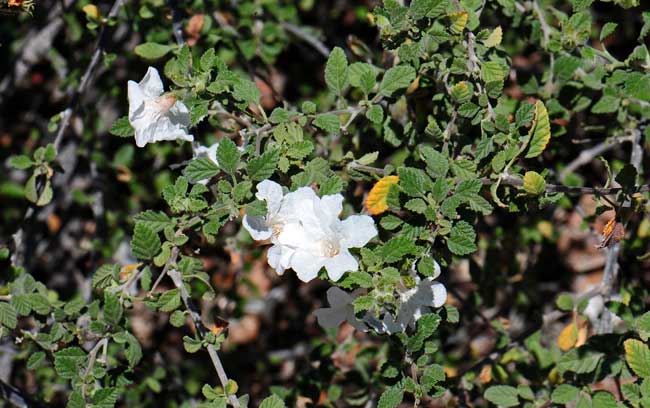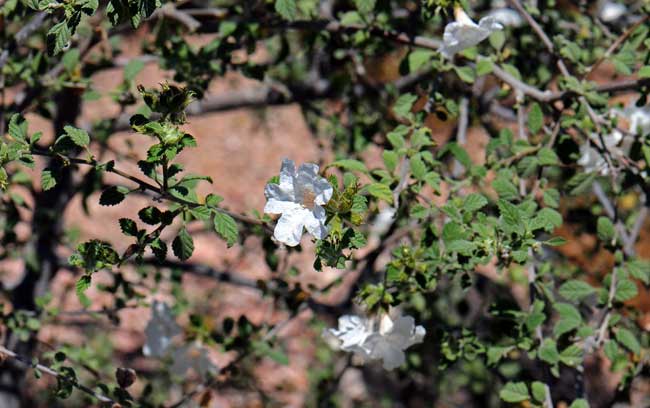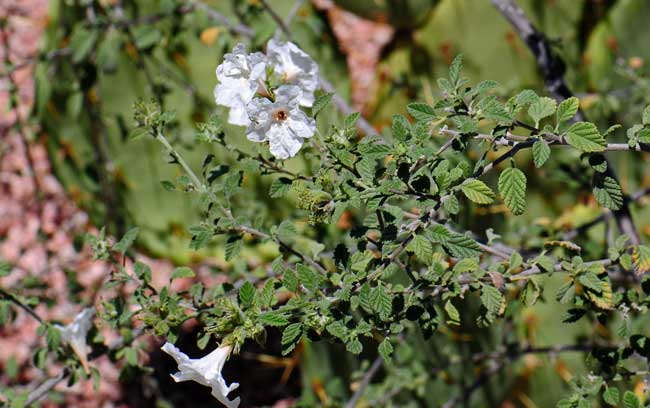Cordia parvifolia, Little-leaf Cordia



Scientific Name: Cordia parvifolia
Common Name: Little-leaf Cordia
Also Called: Small-leaf Geigertree, Smallleaf Cordia; (Spanish: Vara Prieta, Palo Prieto, San Juanito)
Family: Boraginaceae, Forget-Me-Not Family
Synonyms: ()
Status: Native
Duration: Perennial
Size: About 6 to 8 tall, can grow as wide or wider as it is tall.
Growth Form: shrub; erect, multiple stems, stems gray, sprawling, informal looking.
Leaves: Green or olive green; oval or ovate, prominent veins and serrated margins, plants mostly evergreen but may become deciduous.
Flower Color: White, bright white; delicate flowers about an inch or more across with revolute margins; they look like little pieces of tissue paper from a distance.
Flowering Season: Spring (March) and late summer bloomer.
Elevation: Above 3,500 feet.
Habitat Preferences: Southern Arizona.
Recorded Range: Very rare in the United States found only in southern Arizona.
North America & US County Distribution Map for Cordia parvifolia.
U.S. Weed Information: No data available.
Invasive/Noxious Weed Information: No data available.
Wetland Indicator: No data available.
Threatened/Endangered Information: No data available.
Comments: Little-leaf Cordia makes an excellent landscape plant for medium to large areas. It can be used as an accent plant or in groupings for large areas. Requires some pruning to avoid the plant from becoming wild looking.

